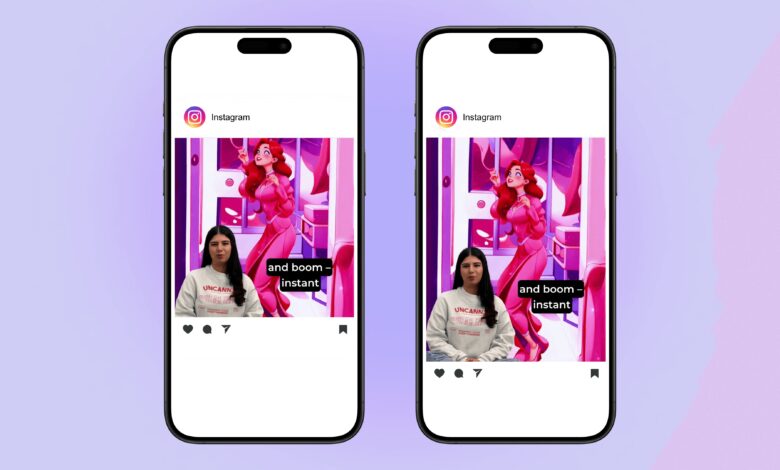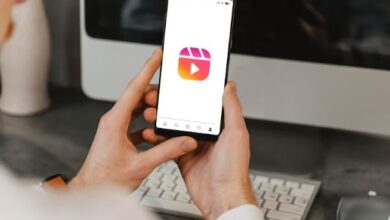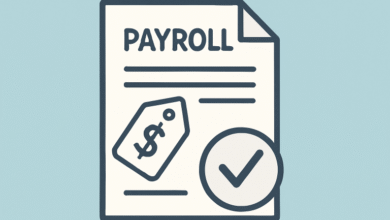How AI Can Turn Your Link into a Scroll-Stopping Video

In the world of digital content, grabbing your audience’s attention has never been harder or more important. Social media feeds are flooded with endless visuals, competing for just a few seconds of user attention. The key to cutting through the noise? Scroll-stopping videos that immediately catch the eye and convey your message in seconds.
But what if you didn’t have to shoot, edit, and animate everything manually? What if you could take a simple article or URL and transform it into a compelling video in minutes? That’s exactly what modern AI technology is now making possible. Let’s explore how artificial intelligence is turning ordinary links into powerful video content and why this is a game-changer for creators, marketers, and brands alike.
The Evolution of Video Creation: From Complex to Effortless
Traditionally, video creation required multiple tools, technical knowledge, and a lot of time. From writing scripts to editing visuals and syncing voiceovers, even the simplest promotional video could take hours or days to finalize. As demand for high-performing video content grew, so did the pressure to streamline production without compromising quality.
This gap has been filled by artificial intelligence. Now, creators can feed a piece of content—be it a blog post, product page, or news article into an AI engine, and within moments, they get a fully edited, platform-ready video. It’s not just faster, it’s more accessible, even to those with no prior video-making experience.
From Link to Video: How It Works
One of the most powerful innovations in this space is the “link to video” capability. Using advanced natural language processing and visual rendering, AI tools like invideo AI can analyze the key content from a given URL and turn it into a structured, engaging video.
For example, if you paste a link to a blog post or product page, the AI identifies the primary message, extracts relevant text, picks images or clips to match the tone, and arranges them into a storyline. It even adds animations, transitions, and background music—all in a matter of minutes.
What’s impressive is not just the automation, but the contextual understanding. The AI doesn’t just copy and paste content it interprets, summarizes, and repackages it visually in a way that resonates with the viewer. The result? A highly shareable, scroll-stopping piece of content that looks like it was made by a professional.
Why Scroll-Stopping Videos Matter in 2025
1. Attention Spans Are Shorter Than Ever
Recent studies suggest that the average human attention span online is now less than 8 seconds. That means you have just a few moments to stop the scroll and hold a viewer’s gaze. A well-designed video does this far better than static posts or long-form text.
2. Video Is the Top-Performing Content Format
Whether it’s Instagram Reels, YouTube Shorts, TikTok, or LinkedIn videos, the algorithm favors motion. Social platforms reward video content with greater reach and engagement, making it crucial for brands and creators to adapt.
3. Videos Drive More Conversions
Data consistently shows that videos increase engagement, drive click-throughs, and result in higher conversion rates. A scroll-stopping video that tells your story can not only attract viewers but also turn them into customers.
The Role of AI in Enhancing Storytelling
AI doesn’t just automate video creation—it enhances it. With intelligent scene detection, tone matching, voice-over suggestions, and real-time editing recommendations, AI-driven platforms are shaping how stories are told visually.
For instance, after you input your link, the AI might:
- Pull powerful quotes or headlines to use as text overlays
- Suggest scene transitions based on content flow
- Match the background music to the emotion of the topic
- Recommend video length based on where you plan to share it (Instagram, LinkedIn, etc.)
These enhancements turn a flat article into a dynamic experience, significantly increasing the odds of your content being noticed and remembered.
Who Can Benefit from AI-Powered Link-to-Video Tools?
1. Content Creators and Influencers
Need to quickly convert a new blog post or interview into a video? AI can do it in minutes, freeing up your time to focus on engagement and growth.
2. Marketing Teams
Turn press releases, campaign pages, or email newsletters into videos that can be shared across multiple platforms to boost reach.
3. Educators and Coaches
Transform learning material or course outlines into bite-sized educational videos that are easier to digest and share.
4. Small Businesses and Startups
With limited resources, small teams can repurpose existing content like product pages or testimonials into high-quality promotional videos without needing a production crew.
Integration with Video Apps for Maximum Impact
Once your video is generated, the next step is distribution, and that’s where video apps come in. These mobile and desktop platforms allow for easy publishing, analytics tracking, and scheduling. Many even offer built-in optimization for platforms like TikTok, YouTube Shorts, and Instagram Reels.
By integrating AI-generated videos with these video apps, users can streamline the entire process from content to conversion. The synergy between automated video creation and intuitive publishing tools ensures that your content not only looks great but also reaches the right audience at the right time.
Best Practices for Creating Scroll-Stopping AI Videos
1. Start with Clear, Purposeful Content
The quality of your input determines the quality of your output. Make sure your link contains focused, value-rich content. If it’s cluttered or unclear, the AI might struggle to extract a compelling narrative.
2. Keep It Short and Sweet
While AI can produce long videos, short-form content typically performs better on social media. Aim for under 90 seconds if you’re targeting platforms like Instagram or TikTok.
3. Optimize the First Few Seconds
Your intro must grab attention. Use bold text, striking visuals, or provocative questions to create a hook right from the start.
4. Add Captions
Most viewers watch videos on mute, especially in public. Adding text overlays or captions helps ensure your message is received with or without sound.
5. Preview and Tweak
Even though AI automates the process, don’t skip the final check. Customize the visuals, rephrase a headline, or change the pacing to better suit your brand voice.
The Future of Link-to-Video AI
We’re only at the beginning of what’s possible. In the near future, expect even more personalized and adaptive video generation. AI will not only create content based on a link but also adjust it in real time depending on your audience, platform, and even time of day.
Features on the horizon include:
- Multilingual video generation
- Real-time A/B testing and analytics
- Emotion-based scene selection
- Auto-adaptation for different aspect ratios and platforms
With these advancements, the process of content creation will become more strategic, data-driven, and impactful than ever before.
Final Thoughts
AI is revolutionizing how we create and share content. Turning a simple link into a scroll-stopping video is no longer a futuristic dream, it’s a present-day reality that is empowering everyone from solo creators to large enterprises.
With intelligent tools like invideo AI leading the way, the process is becoming more intuitive, efficient, and scalable. Whether you’re looking to boost engagement, repurpose written content, or simply save time, AI-powered video generation offers a smart, effective solution.
In a world where attention is the most valuable currency, videos created from just a link might just be your most powerful weapon.



